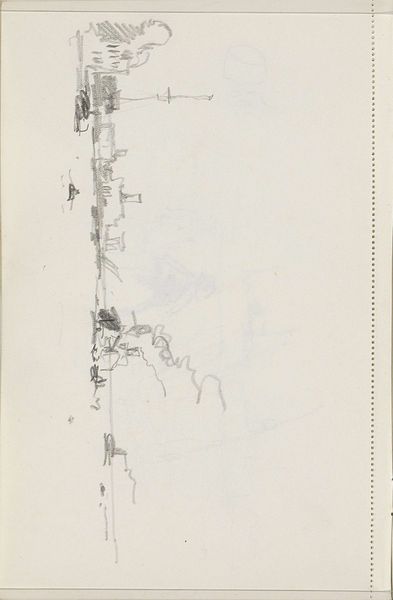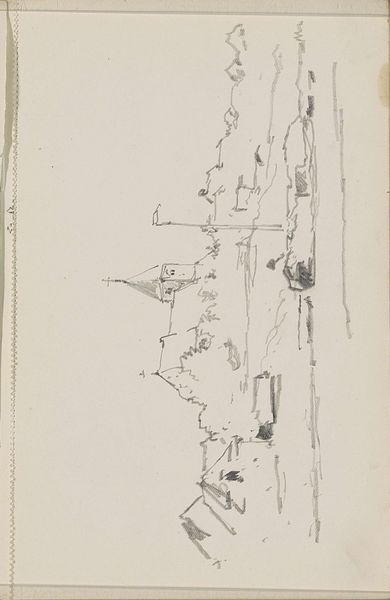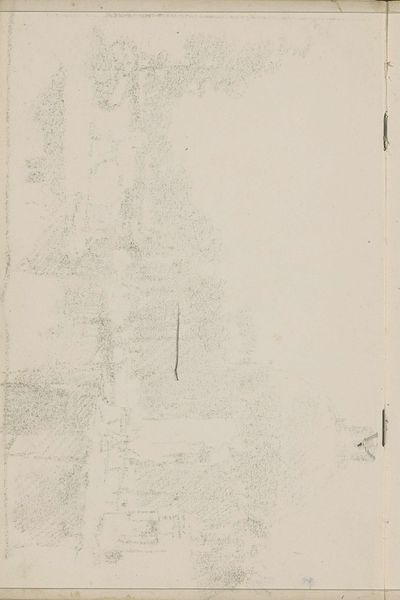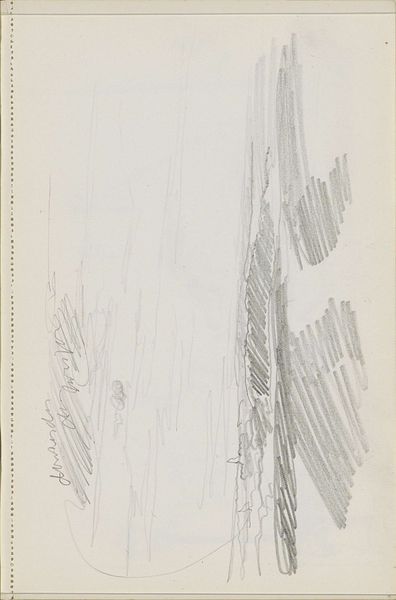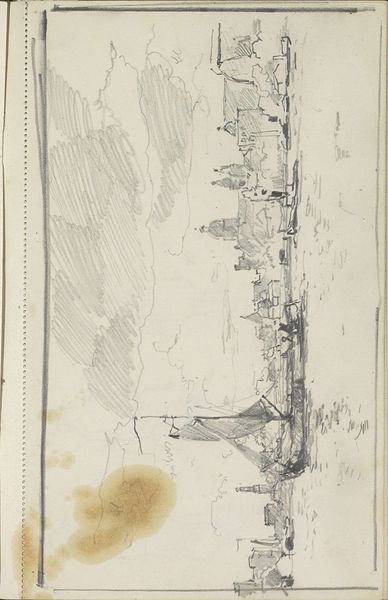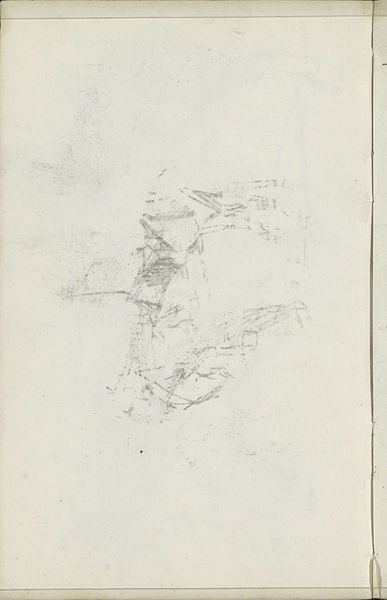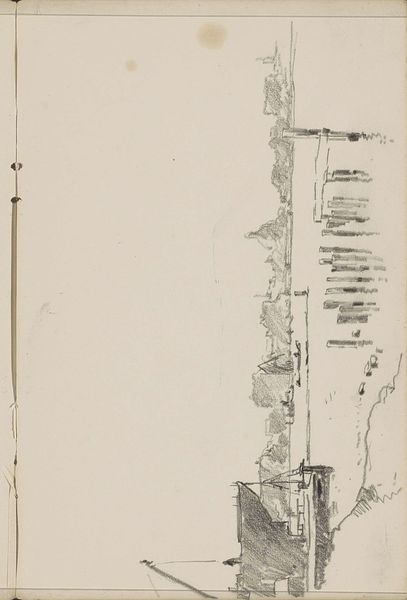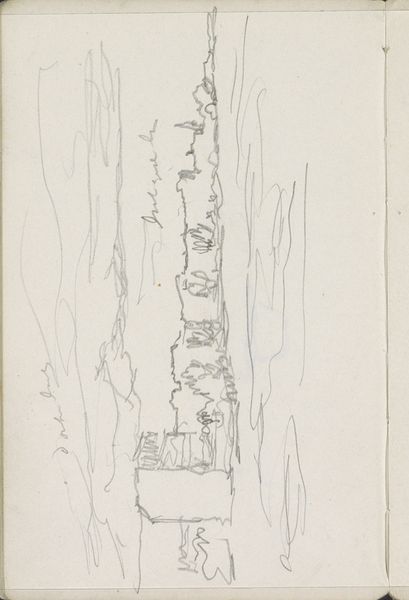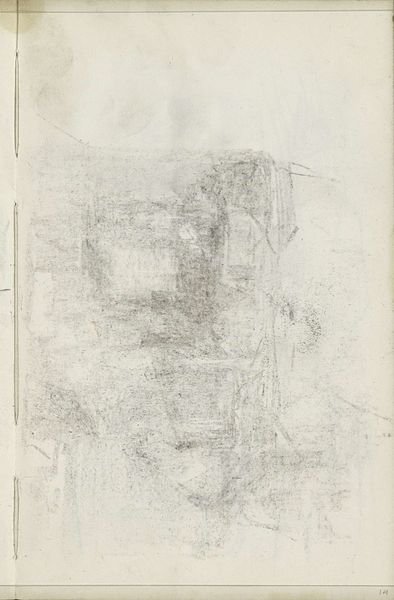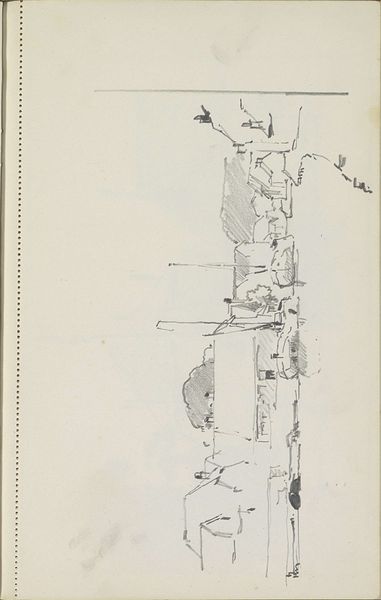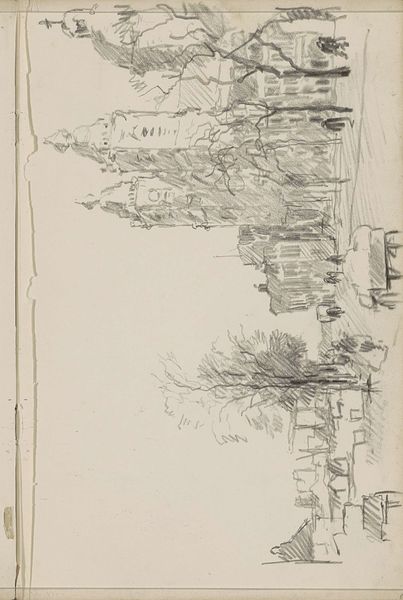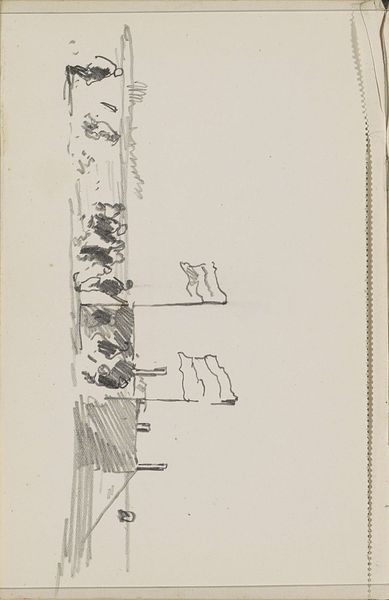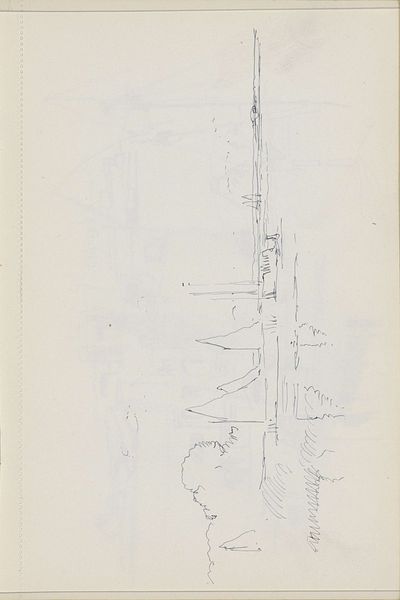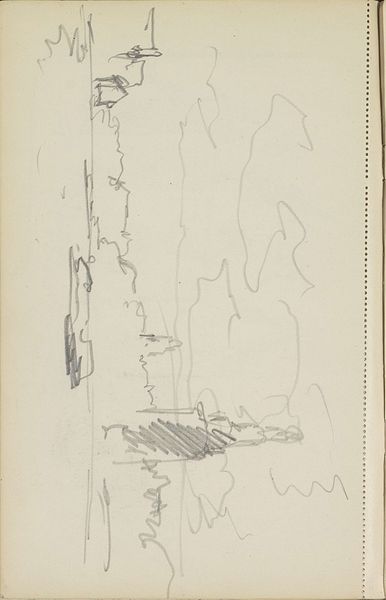
Copyright: Rijks Museum: Open Domain
Curator: Welcome. We're standing before Cornelis Vreedenburgh's "Havengezicht," dating roughly from 1890 to 1946, a pencil drawing currently held here at the Rijksmuseum. Editor: It's fascinating! Raw, almost like a fleeting thought captured on paper. The starkness of the pencil against the empty space… it feels like a place waiting to happen. Curator: Vreedenburgh was known for his cityscapes and landscapes, and this piece is no exception. One could argue that this drawing's lack of completion might symbolize that. However, his dedication to depicting cities demonstrates that city spaces were becoming social stages with new dynamics between work and leisure. Editor: I am mostly looking at his medium, it's essentially lines upon lines; almost violently constructed by these obsessive mark-makings on the paper to generate an urban-materiality that feels incredibly contemporary even though it could be easily dismissed as something sketched in haste on paper. Curator: Indeed, but it could suggest the burgeoning industrialization of harbor cities at the time. Artists like Vreedenburgh were actively documenting these changing landscapes. And they engaged with the rise of urban culture and its influences. Editor: Precisely, you feel the grit, the implied clamor and bustle. The work almost vibrates with energy despite its quiet, understated presentation, where boats appear weightless along a fluid sea. Curator: Right. So we witness not just an industrial revolution, but the shift of cities and people within them through an urban evolution with pencil on paper. Editor: For me, it underscores the raw labor that constitutes such transformations, focusing on how something as fundamental as the harbor shaped individual lives. Thanks, it’s always good to focus on art processes as part of art evaluation. Curator: Agreed, and to examine these landscapes as reflections of their rapidly changing societal contexts, thanks!
Comments
No comments
Be the first to comment and join the conversation on the ultimate creative platform.
